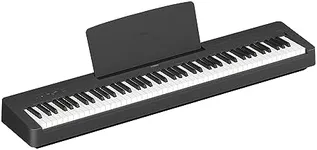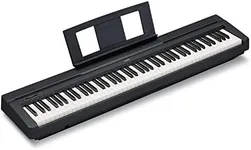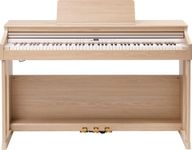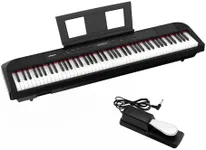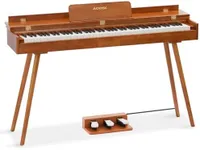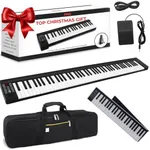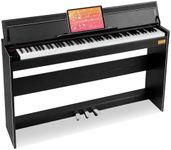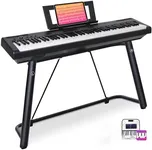Buying Guide for the Best Digital Piano For Beginner
Choosing the right digital piano as a beginner can be a rewarding experience that sets the foundation for your musical journey. It's important to consider various features that will enhance your learning and playing experience. Here are some key specifications to look out for and how to choose the best fit for you.Key ActionKey action refers to how the keys feel when you press them. This is important because it affects your playing technique and comfort. There are three main types: non-weighted, semi-weighted, and fully-weighted (hammer action). Non-weighted keys are lighter and easier to press, making them suitable for very young beginners. Semi-weighted keys offer a balance between ease of play and a more realistic piano feel. Fully-weighted keys mimic the feel of an acoustic piano and are ideal if you plan to transition to an acoustic piano in the future. Choose based on your comfort and long-term goals.
Number of KeysDigital pianos come with different numbers of keys, typically ranging from 61 to 88. An 88-key piano is the standard for classical piano music and provides the full range of notes. However, for beginners, a 61 or 76-key piano can be sufficient and more compact. If you are serious about learning and want to play a wide variety of music, an 88-key piano is recommended. For casual learning or limited space, fewer keys might be more practical.
Sound QualitySound quality is crucial as it affects your overall playing experience. Digital pianos use samples of real pianos to produce sound. Look for pianos with high-quality samples and good speakers. Some pianos also offer different sound settings and effects. As a beginner, you might not need the highest-end sound, but ensure the piano produces clear, realistic tones that you enjoy listening to. Trying out different models in a store can help you decide.
PolyphonyPolyphony refers to the number of notes a digital piano can produce at once. Higher polyphony allows for more complex and sustained sounds, which is important as you progress and play more intricate pieces. Beginners can start with a polyphony of 64 notes, but if you plan to advance, consider a piano with 128 or more notes of polyphony to avoid limitations in the future.
PortabilityPortability is a consideration if you need to move your piano frequently or have limited space. Portable digital pianos are lighter and often come with built-in speakers. However, they might compromise on key action and sound quality compared to console models. If you need a piano that you can easily transport or store, look for a lightweight model. If you have a dedicated space for practice, a heavier, more robust model might be better.
Learning FeaturesMany digital pianos come with built-in learning features such as metronomes, lesson modes, and connectivity to learning apps. These features can be very helpful for beginners as they provide guidance and make practice more engaging. Look for pianos that offer features that align with your learning style and needs. For example, if you prefer structured lessons, a piano with integrated lesson modes might be beneficial.
ConnectivityConnectivity options such as USB, MIDI, and headphone jacks can enhance your learning and playing experience. USB and MIDI connections allow you to connect your piano to a computer or tablet for use with music software and learning apps. Headphone jacks are useful for practicing without disturbing others. Consider what additional equipment you might use and choose a piano with the appropriate connectivity options.
